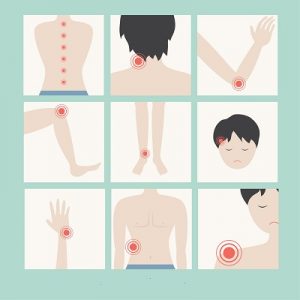 Acupuncture is an ancient alternative medical practice that has been used for centuries by practitioners of Traditional Chinese Medicine for the management of a variety of conditions. It is especially helpful in conditions such as chronic pain syndrome.
Acupuncture is an ancient alternative medical practice that has been used for centuries by practitioners of Traditional Chinese Medicine for the management of a variety of conditions. It is especially helpful in conditions such as chronic pain syndrome.
In particular, acupuncture may be beneficial in the management of persistent low back pain, chronic tension headaches, and migraine headaches.
The National Institute for Health and Care Excellence (NICE) recommends acupuncture for tension related headaches, migraine, and severe lower back pains.
Acupuncture and Lower Back Pain
According to WebMD, almost 80 percent of us will have some type of back pain over the course of our lifetimes. Some people see their primary care physician for physical therapy and medications to control the pain, while others seek the advice of a qualified acupuncturist in order to have acupuncture relieve their chronic low back pain.
Research has shown that acupuncture may be a good treatment for managing chronic low back pain. In one review article, 22 clinical studies were combined that showed acupuncture was effective in managing chronic low back pain, although the effects were not long lasting. Those patients, who got acupuncture as opposed to a placebo acupuncture treatment, had a decrease in their subjective sense of pain in the lower back.
The same studies showed that, when acupuncture was compared to standard medical treatment for low back pain, acupuncture outperformed the traditional therapy. These studies prompted guidelines from the American College of Physicians and the American Pain Society to endorse acupuncture as an effective way of managing chronic low back pain.
Acupuncture involves the insertion of fine, sterile needles into specific areas of the body. There are more than 2000 different acupuncture points that are connected by energy pathways, known as meridians. The energy that flows through these meridians is called qi energy. When the specific acupuncture points have needles inserted in them, the back pain is relieved, and the flow of qi energy is enhanced.
It is believed by Western scientists that acupuncture works through its stimulating effect on the central nervous system (CNS). It may cause the release of pain-relieving chemicals in the brain, spinal cord, or muscles, thereby relieving the pain. Others think that acupuncture increases the passage of electromagnetic, causing a rush of endorphins, which are the body’s natural painkillers.
It may also be that acupuncture alters brain chemistry, changing the way neurohormones and neurotransmitters are released by nerve cells in the brain. This change in neurotransmitters may turn on or off nerve impulses related to the subjective symptoms of pain.
Acupuncture and Tension Headaches
In a study out of Germany, 270 individuals with chronic tension headaches were evaluated. Some got a full course of acupuncture, while others got “sham” acupuncture, in which needles are place at non-acupuncture sites. Both groups got some relief in the perceived pain of their tension headaches, with long lasting benefits, lasting several months after discontinuation of treatment.
About 75 percent of all participants were women. They were, on average, about 43 years of age. Some had severe tension headaches that occurred more than half of the days of the month, while others had fewer headaches. Both groups that got acupuncture did so for 12 weeks, receiving 16 thirty-minute sessions of acupuncture.
The results of the study were that those who received a full course of acupuncture had more than seven fewer headache days per month, while those who received minimal acupuncture had 6.6 fewer headaches per month.
Those that got no treatment had more headaches per month at the end of the study. Some patients had ongoing improvement in symptoms, even after the acupuncture treatments had stopped.
Acupuncture and Migraine Headaches
A recent study, which was published in the Canadian Medical Association Journal, looked at nearly 500 individuals with migraine headaches. Half the participants received traditional Chinese acupuncture, while the other half had “sham” treatment, in which the needles were placed in areas not associated with acupressure sites. The participants were blinded as to the type of treatment they were given. The study lasted one month long.
When the study was completed, everyone had a reduction in migraine headaches, even those that were given sham therapy. The incidence of migraines went from an average of six migraines per month to an average of three migraines per month. After the treatments were over, the entire study group showed ongoing improvements in the intensity and frequency of migraine headaches, even when receiving no treatments.
All of these conditions have one thing in common in that they all deal with some aspect of pain. From the studies shown above, it appears that acupuncture may be a good therapy to try if you have any of these common medical conditions.






